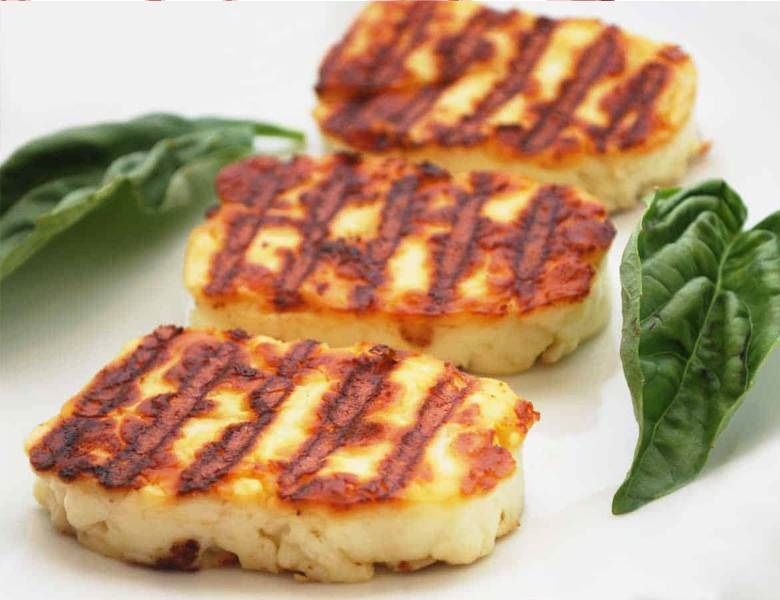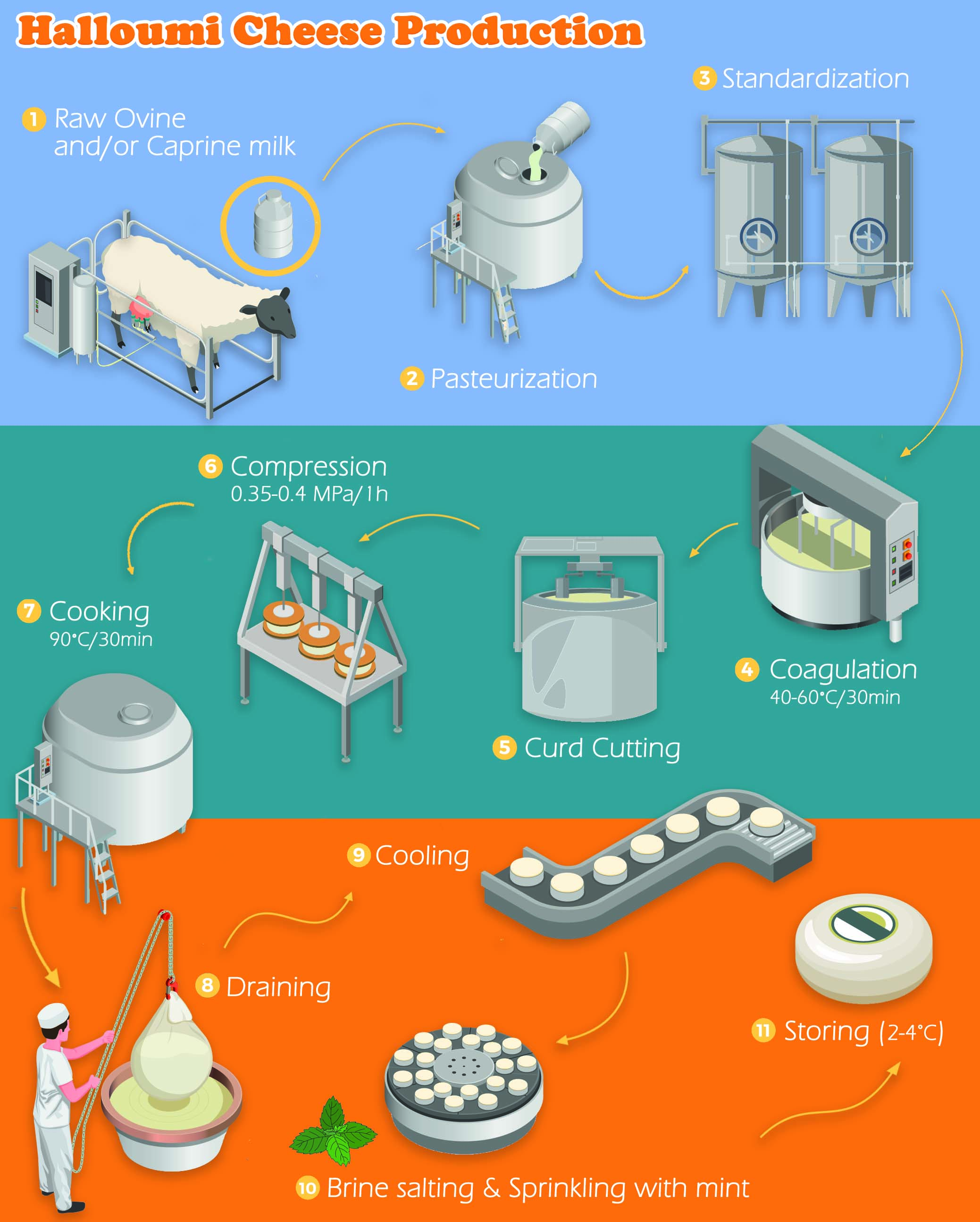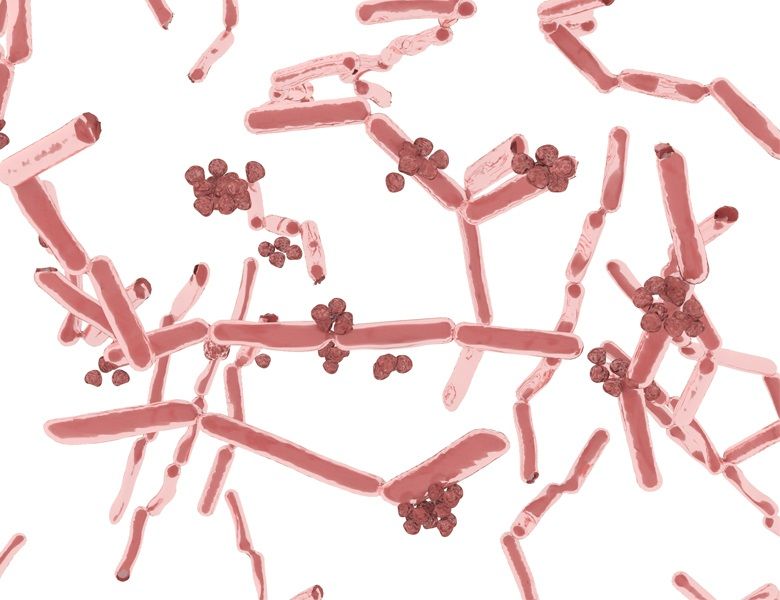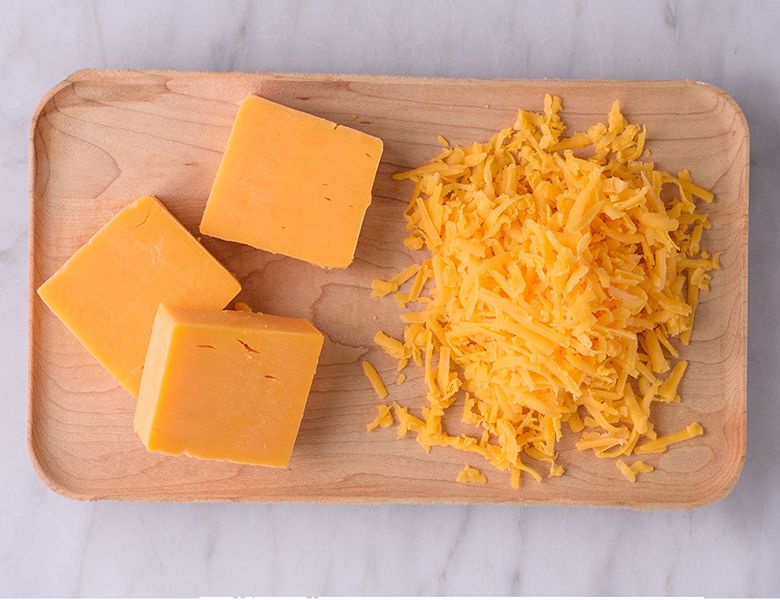Halloumi Cheese

- | آتاماد |
- Viewer: 157
Traditionally made from goat's and/or sheep's milk, and sometimes cow’s milk on the Eastern Mediterranean Island of Cyprus.
Halloumi color varies from white (made from sheep or goat milk) to yellowish white (made from cow's milk). Similar to mozzarella, halloumi is a semi-hard, unripened, and brined cheese with a slightly spongy texture. Its flavor is tangy and salty, and it has no rind. Halloumi can be eaten raw, but due to its high melting point, it is an ideal cheese for grilling or frying. Raw halloumi is plain and rubbery with salty notes. However, heating and grilling make it crispy and savory on the outside and sensually melted on the inside, similar to the consistency of a marshmallow when toasted, and mellow the saltiness.
As for the production process, rennet (mostly vegetable or microbial) is added to coagulate the milk. Unlike most cheeses, no commercial or natural starter cultures are used in the production of halloumi cheese, and non-starter lactic acid bacteria originating from the dairy environment are also important in flavor development. When the curds form, they are cut, the whey is drained, and the curds are left to firm up and pressed into molds.
The cheese is then poached in water or whey, and it's this additional heating step that provides Halloumi's resistance to melting. The cheese is then salted (and traditionally sprinkled with mint) and can be eaten fresh within three to five days. Otherwise, it can be preserved in brine and aged for several months, which contributes to its salty flavor. The fresh type has a white color, elastic texture, sweet and slightly salty taste, and no coating, whereas the aged one has a yellow color, hard texture, and sour, acidic, and salty taste.
Halloumi is firm in texture and is sold in compact bricks and vacuum-packed in plastic, similar to feta cheese. It is usually called Halloumi-style, grilling cheese.
Raw materials used for the production of Halloumi cheese
Milk:
Milk from sheep and goats is mainly produced in the countries located in the Mediterranean basin and is almost exclusively used for cheese production. This milk is considered important for the dairy industries of the Mediterranean countries as well as the Middle East. For example, in Cyprus, goat and sheep milk make up 30% of the total milk production. Sheep and goat milk are used in the production of traditional dairy products such as halloumi and yogurt.
Salt
Salt is an integral part of halloumi cheese production because it contributes to the taste of fresh halloumi cheese and controls the multiplication of pathogens or spoilage microorganisms. Salt is also important in the maturation of halloumi, so fresh cheese is immersed in 12% salt water until it is matured.
Mint:
Mint is usually added to halloumi cheese at the stage of adding dry salt. Adding mint is not standard or compulsory. Coagulant: Currently, the coagulant that is extensively used to make halloumi cheese is of non-animal origin, allowing it to be labeled "suitable for vegetarians" while smaller dairy factories use commercial animal rennet. The amount of curd used is 1 ml per 100 ml of milk to provide a firm coagulum in about 60 min.
Starter Cultures: In Cyprus, the production of halloumi cheese is made without adding a starter culture, but it can be used to ripen milk in some countries of the Middle East or elsewhere in Europe to produce halloumi-type cheese.
Manufacturing Methods
• The traditional production process
No commercial or natural starter cultures are used in this method, and changes in flavor and possibly texture depend only on the microflora of the milk. During the maturation stage, the yeasts in the salted whey used for storage, and non-starter lactic acid bacteria originating from the dairy environment are also important in flavor development.
After coagulation of the milk with an animal coagulant, the curd is manually cut into small cubes that will be left to rest and precipitate for a few minutes. The curds are then collected and transferred to small plastic perforated conical molds. Without applying pressure, the curd is left to drain for 1 hour until the water comes out and the whey is collected to be used to prepare salt water.
As the curd is left to drain, the collected whey is transferred to a cooking vat where it is heated to 90-95°C with continuous stirring. This causes denaturation of the whey proteins, which consequently float to the surface of the vat. Using a ladle, the soft denatured whey proteins are collected and placed into perforated plastic molds to drain. It is called Anari cheese, which is similar to Ricotta - a soft whey cheese variety. Anari can be consumed fresh and unsalted within 2 days after production, or consumed in salted whey or dry salt shelf life of more than 1 year
The next step during cheese production involves cooking the cheese blocks in hot whey at 90°C for at least 30 minutes. This is a very important step because it determines the plasticization of the curd. In addition, the half-cooked curd will give an irregular color in the center of the block. Properly cooked cheese blocks will float on the surface of the hot whey.
After cooking, the cheese blocks are sprinkled with dry salt and crushed dry mint leaves are sprinkled on them and then they are folded crosswise and left to cool for a few hours. Then the cheese blocks are placed in containers of different sizes between 1 and 5 kg and filled with salted whey (prepared from the whey used for boiling plus 12 g NaCl 100 mL-1). to cover all the blocks of cheese.
Fresh Halloumi cheese is a commercial product that is marketed directly after production, that is, 24 hours after production. Mature halloumi cheese is a commercial product that is marketed at least 40 days after production (the cheese matures in salted whey).

• The industrial production process and comparison with the traditional method
Milk standardization is necessary to achieve the correct ratio of casein to fat.
After coagulation of the milk with non-animal rennet in cheese vats with a capacity of 3500 liters each, the curd is cut horizontally and vertically using rotating stainless-steel knives. The curds are left for a few minutes in order to settle in the vat and release the whey. A firm curd and subsequent fine cutting of curds are very important in order to avoid fat loss in the whey.
The curds are covered with a perforated stainless-steel sheet and a pressure of 0.35-0.4 MPa is applied to the curds in order to extract more whey. This step is not included in the traditional production method because the use of sheep's milk produces a firm curd that requires less whey extraction than cow-sheep/goat milk.
The way in which the cheese is salted also differs in the industrial production of Halloumi cheese. The fresh product is not dry salted in any way, but left to cool on a cheese table under controlled temperature conditions and directly placed in 100 kg containers, containing cool pasteurized whey with added salt (12 g NaCl 100 mL-1) is placed. Halloumi blocks will remain in the whey brine for 18 hours at a temperature of 3-5 °C, which is the time required for the cheese to reach the desired level of salt. Finally, 300 g pieces of halloumi cheese are removed from the whey brine, sprinkled with dry sterilized mint, individually vacuum-packed, and stored in refrigerated stories at 2-4°C until distribution. However, mature Halloumi is packed in 1–5 kg plastic containers containing whey brine for at least 40 days at 15–20°C.
Conclusion
Halloumi is a Cypriot cheese traditionally made from goat's and sheep's milk, or a mixture of the two, and sometimes cow's milk is used. It's most appreciated as a grilling cheese because it maintains its shape when heated and grills well.
Halloumi became widely available in Turkey after 2000. In 2013, demand in the UK exceeded all other European countries except Cyprus. The importance of halloumi cheese to the Cypriot economy is well established and the relevant government bodies are committed to "protecting" the cheese by applying for Collective Trademarks and more recently EU PDO labeling.
Reference
Tamime, A.Y. ed., 2008. Brined cheeses. John Wiley & Sons.
GET IN TOUCH
Copyright © 2023 Atamad.com All right reserved
Website design and SEO services by Seohama team – Web hosting by Sarverhama
Copyright © 2023 Atamad.com All right reserved
Website design and SEO services by Seohama team – Web hosting by Sarverhama








